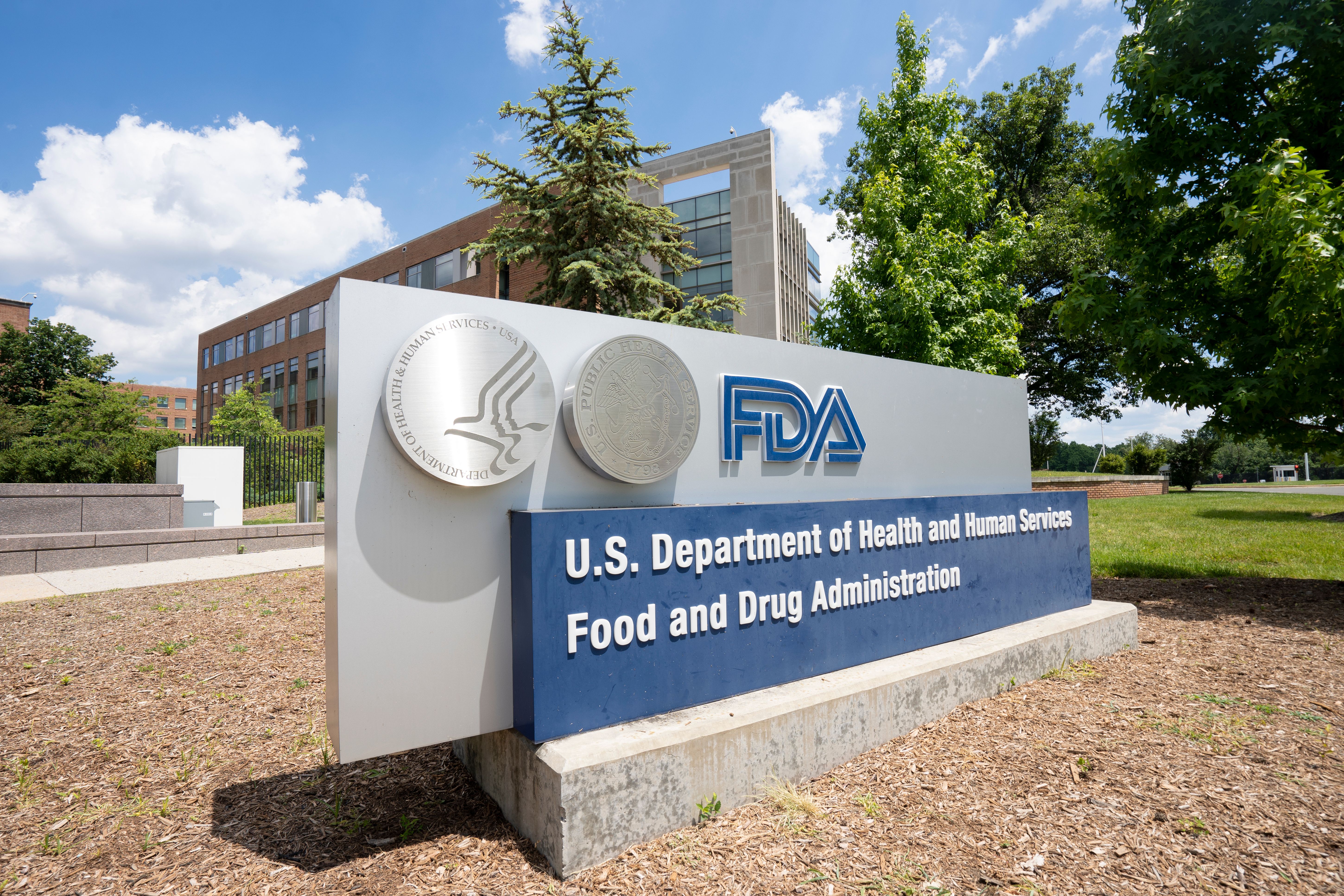Publication
Article
Pharmaceutical Technology
Upheaval at FDA Means Changes for the Pharmaceutical Market
Author(s):
New leadership must address political and scientific issues as the Medicare drug benefit alters manufacturer incentives.
After a year of turmoil concerning drug safety, critical vaccine shortages, and a clamor to permit the importation of unapproved low-cost drugs from abroad, the US Food and Drug Administration faces further upheaval from within.

Jill Wechsler
Commissioner Lester Crawford resigned abruptly in September after only two months in the top spot, generating considerable uncertainty about the future leadership of the agency. The Bush administration's strategy of naming a temporary replacement raised new concerns instead of restoring public confidence in the troubled agency's ability to assess the risks and benefits of medical products. At the same time, FDA officials seek to expand electronic information systems as a way to address drug safety issues, while drug manufacturers are keeping a close eye on how Medicare pharmacy benefit plans are shaping drug coverage and use for millions of elderly Americans.
Conflicts of interest
Following Crawford's surprise announcement, the White House tapped Andrew von Eschenbach, director of the National Cancer Institute (NCI) at the National Institutes of Health (NIH), as acting FDA commissioner. As a cancer specialist from the M.D. Anderson Cancer Center in Houston before coming to NCI in 2002, he has close ties to the Bush family and to Congressional leaders.
Von Eschenbach reassured FDA staffers that he would work hard to ensure a smooth transition and to keep agency efforts on track. Pharmaceutical and biotech companies publicly applauded the choice of a figure who is acquainted with the FDA approval process through collaborative efforts between NCI and FDA. Von Eschenbach has supported joint FDA–NCI initiatives to develop and validate biomarkers and advance personalized medicine as part of his campaign to transform cancer into a manageable disease by 2015.
But von Eschenbach's initial decision to remain NCI director while taking the helm of FDA drew sharp rebukes from all sides. In response, von Eschenbach handed over day-to-day management of NCI to a deputy, but that move failed to appease Congressional critics. Legislators and patient advocates continued to voice concerns about inherent conflicts of interest in advocating for speedy access to new cancer treatments while overseeing the safety and effectiveness of those therapies.
In response, Health and Human Services secretary Michael Leavitt indicated that von Eschenbach would not get the top spot at FDA on a permanent basis.
Meanwhile, the acting FDA commissioner has the tough task of gaining familiarity with the many complex and critical regulatory programs that FDA oversees. Initiatives to spur new therapies along the critical development path have taken a back seat to dealing with daily crises. Congress wants to overhaul the oversight of drug safety, liberalize drug imports, and ensure adequate vaccine supplies. Battles continue over broader access to the emergency contraception pill, "Plan B," and the regulation of follow-on biologics. The safety and testing of implantable medical devices have emerged as serious concerns, and the need to maintain the safety of the nation's food supply is a monumental task. Von Eschenbach's enthusiasm for speeding new treatments to patients draws objections from a broad range of advocates who are equally concerned about protecting relatively healthy patients from high-risk medicines.
The clouded circumstances of Crawford's departure, moreover, may further complicate efforts to secure a permanent FDA leader. Congress and the Health and Human Services inspector general are investigating whether the Senate confirmation process failed to uncover important information related to Crawford's appointment, which may result in even more rigorous scrutiny of any future nominee. Senate Democrats have insisted that the FDA commissioner be completely free of pharmaceutical company influence, although Republicans want someone who fits their political agenda. Current FDA officials are linked too closely to recent agency missteps to be confirmed.
Soldiering on
FDA officials insist they will carry on as usual during the transition to new leadership, because it may take months for the White House to appoint and the Senate to confirm a permanent FDA commissioner. Following Crawford's terse resignation announcement, Deputy Commissioners Scott Gottlieb, Janet Woodcock, Murray Lumpkin, and Patrick Ronan sent a message to all FDA employees emphasizing their commitment to the agency and intention to continue its important work.
During this uncertain interregnum, however, it will be difficult for staffers to move forward with controversial initiatives or to address fears that drug safety crises have created a go-slow approach on the new-drug approval side of FDA. Manufacturers believe that safety issues have delayed the approval of some important new therapies, and that advisory committee meetings now devote far more time to discussions of minor adverse events.
Some critics maintain that more extensive premarket testing protocols could prevent postapproval safety problems, but researchers counter that expanded development programs may not reveal adverse events that occur in a small number of patients or that take time to emerge. Drug development experts instead look for strategies to make clinical trials more efficient by gaining more information from a smaller number of select study participants.
All the facts
The importance of addressing drug safety issues is apparent from a number of agency initiatives. FDA has scheduled a public meeting next month (Dec. 7–8) to solicit public comment on its traditional ways of communicating drug risk information through talk papers, health advisories, press releases, and adverse-event information postings on its MedWatch system. The agency's new Drug Safety Oversight Board has begun to privately assess safety concerns while agency staffers evaluate comments on the proposal to make public emerging drug-safety information on a new "Drug Watch" Web site.
These and other activities are part of a broad initiative to build a central electronic information system that can provide up-to-date information on medical product safety and appropriate use. Unofficially dubbed "Facts@FDA," the system will contain current product labeling information plus safety data gleaned from adverse event reports, explains Gottlieb. Additional information on drug safety and outcomes also will come from Medicare and health plan information systems that collect extensive data on prescription drug prescribing and use. FDA signed a contract in September with four leading health plans to provide postmarket surveillance data on 11 million covered patients.
A key component of Facts@FDA will be the DailyMed databank of prescription drug labels, operated by the National Library of Medicine. Pharmaceutical companies began submitting changes to drug labels electronically this month (Nov. 1, 2005) using the recently adopted Structured Product Labeling (SPL) standard. DailyMed will generate electronic drug labels as new drugs are approved and as manufacturers file annual reports with revised labels to fit the new format.
Over the next year, DailyMed should obtain electronic information on all marketed prescription drugs, including generics and biologics regulated by the Center for Drug Evaluation and Research (CDER). And once FDA publishes its long-awaited final professional labeling rule, the system will make it easier for manufacturers to revise label information to fit the new format. Ultimately, patients will be able to gather current product labeling information from the Internet or from pharmacy kiosks, eliminating the use of costly paper package inserts.
The future vision is for DailyMed label information to link to adverse event reports filed by manufacturers and submitted by physicians and pharmacists through FDA's MedWatch program. MedWatch also posts current information on new label warnings and safety problems, including those about product mix-ups related to look-alike product names and packages. A recent notice, for example, warns healthcare professionals to watch for confusion in prescribing and dispensing AstraZeneca's hypertension drug "Toprol-XL" (metroprolol succinate), Ortho-McNeil's "Topamax" (topirmate) therapy for epilepsy and migraine, and Novartis's seizure treatment "Tegretol" (carbamazepine).
FDA currently makes this data available to the public on a quarterly basis, but Gottlieb suggests that more-frequent Internet postings may be useful. FDA's hope is that making it easier for healthcare practitioners to access current drug adverse event information may encourage more physicians to report signs of trouble to MedWatch, something they now do very infrequently.
A third component of the envisioned Facts@FDA system may include reports of emerging drug safety signals from FDA's proposed Drug Watch Web site. The plan has sparked opposition from pharmaceutical companies and health experts, who worry that the public may become confused and overly alarmed by reports of drug safety problems that may be very preliminary but appear as official FDA warnings. Whatever form the final system takes, more immediate access to current information on a drug's side effects and appropriate use could address many postapproval drug safety concerns that increasingly are forcing some high-risk but effective drugs off the market.
Market overhaul
The role of Medicare in providing information related to drug use and health outcomes will only grow with the launch of the Medicare outpatient prescription drug benefit, now slated to begin Jan. 1, 2006. FDA has been working more closely with the Centers for Medicare and Medicaid Services (CMS) in recent months to share information on the comparative value of medicines and to better coordinate new drug approvals with Medicare coverage decisions. Until now, Medicare coverage decisions have involved primarily drugs administered in only clinics and doctors' offices.
The new drug benefit will greatly expand payment for prescription drugs by federal, state, and local governments, increasing the public sector's control of the prescription drug market to more than 40%, up from approximately 25% today. And by boosting the use of prescription drugs by the elderly, the program will have a major spillover effect on the commercial pharmaceutical market, says consultant Alex Vachon of Hamilton PPB (Washington, DC).
The program already is reshaping business alliances as pharmacy benefit managers (PBMs) link up with retail pharmacies and health insurance giants. And as Congress seeks to cut federal spending in the wake of the Gulf hurricanes and the continuing war in Iraq, policy makers will be looking hard for ways to curb outlays for the multibillion-dollar Medicare program. Outlays on prescription drugs will intensify efforts to reduce the cost of prescription drugs, which may lead to more comparisons of drug effectiveness and safety, along with efforts to greatly expand the use of generic drugs. Federal and state officials are taking a close look at how pharmaceutical companies negotiate contracts and calculate rebates and discounts with the insurers and PBMs that have lined up to offer national and regional prescription drug plans (PDPs) to the nation's elderly.
The effect of these changes depends on several developments. So far, the early fear that PBMs would not assume risk in offering Medicare drug coverage has not materialized. Hundreds of private insurers and Medicare Advantage drug plans (MA-PDs) are marketing drug benefits at unexpectedly low prices to gain a piece of the action, and ten companies are providing drug plans on a national basis. In the dog fight to sign up beneficiaries, some plans have set premiums less than $5, and MA-PDs are promoting zero-premium options. Other PDPs feature low or no deductibles, flat co-pays, and offer schemes to fill in the donut hole. These options tend to carry premiums of $50–60 a month or control costs by promoting generic drug use.
Push for generics
The only way to keep the drug benefits for Medicare and private plans affordable and to maintain broad access to prescription drugs and costly biologicals is to educate consumers and prescribers about the value of generic drugs, says Robert Seidman, vice-president and chief pharmacy officer–PBM manager at Wellpoint Inc., (Indianapolis, IN, www.wellpoint.com). Generics currently account for approximately 40% of the nation's prescription drug sales, but Seidman estimates that Medicare drug plans can and should boost that share to 80%. Patent expiration on major blockbuster drugs such as Merck's superstatin "Zocor" (simvastatin), which will occur next June, creates a major opportunity to increase generic drug use, particularly by PDPs that set co-pays to make generic drug use more economical and attractive.
Plans also are shaping formularies with tiered structures and using management tools to steer beneficiaries to preferred drugs. Under CMS rules, formularies must list all medically necessary drugs and adopt strategies that avoid discriminating against high-cost patients. In this first year, most PDPs and MA-PDs have established fairly robust formularies, many of which are already in use by commercial plans and PBMs, reports Babette Edgar, director of the CMS formulary review group. But as plans look to achieve profitability and sustainability, and more generous plans exit the market, Marc Benoff of IMS Health's Cambridge Pharma Consultancy (Fairfield, CT, www.imshealth.com) expects formularies to become more limited in choices and options. Medicare permits plans to change categories and classes only at the beginning of the plan year and requires advance notification of drug additions, deletions and tier changes. CMS also may revise its model formulary and mandatory coverage requirements, an important process for marketers and plans alike.
New alliances
PDPs that fail to control costs through generic prescribing and other approaches will be forced to drop their Medicare business, giving surviving companies more market leverage and increasing pressure on manufacturers to negotiate lower prices and higher discounts.
The initial deal-making between plans and industry took place months ago, and the word is that manufacturers have offered rebates much higher than expected to get drugs in competitive classes on formularies, according to Benoff. The negotiations also have involved tier placement, inclusion in-step therapies, and whether a product is subject to prior authorization or therapeutic interchange. Although CMS has promised to keep actual rebate and discount figures confidential, tier placement and other plan features may reveal a lot about pharmaceutical deals. CMS also is likely to face increased political pressure to make more proprietary information public, even though keeping price information proprietary makes discounting easier.
Relying on private plans to provide a major Medicare benefit through negotiated prices is a big experiment, comments John Rother of AARP (Washington, DC, www.aarp.org). A key issue for the pharmaceutical industry, he adds, is whether the Medicare drug benefit will lower prices enough for seniors to reduce the political pressure on issues such as drug importation.
With all eyes on the costs and benefits of the Medicare Rx program, government agencies will increase the scrutiny of payment and rebate arrangements between pharmacy plans and manufacturers. Any arrangement that smacks of hidden incentives or special deals to induce product coverage will be fodder for federal and state investigators who expect lots of enforcement action arising from this high-cost and highly complex program.
Medicare may benefit from the abundance of drug use data that contributes to postmarket assessments of drug safety issues and provides useful information on comparative drug costs and effectiveness. Manufacturers may privately support more price transparency to reveal what plans really pay for drugs, but the end result may be a de facto national formulary with uniformly low prices on most drugs. The promised trade-off for pharma companies is that reduced rates and profits will be offset by a major market expansion, but some analysts say that federal price controls may look more attractive than negotiated rates in a few years.
Jill Wechsler is Pharmaceutical Technology's Washington editor, 7715 Rocton Ave., Chevy Chase, MD 20815, tel. 301.656.4634, jwechsleradvanstar.com
Newsletter
Get the essential updates shaping the future of pharma manufacturing and compliance—subscribe today to Pharmaceutical Technology and never miss a breakthrough.






